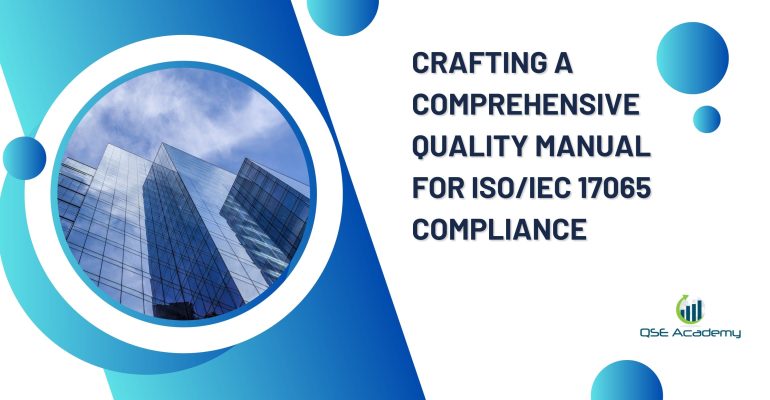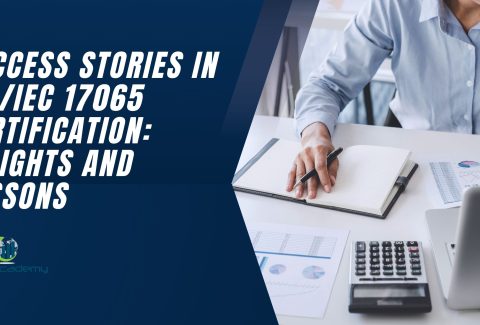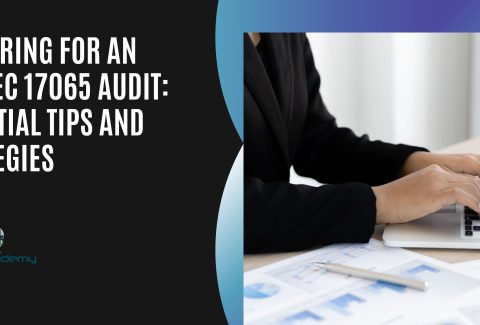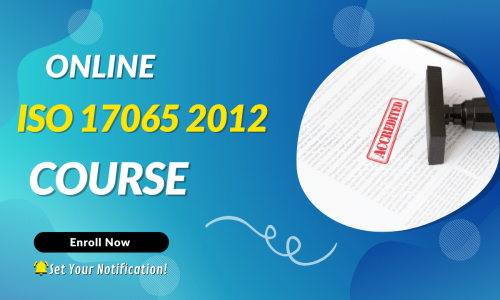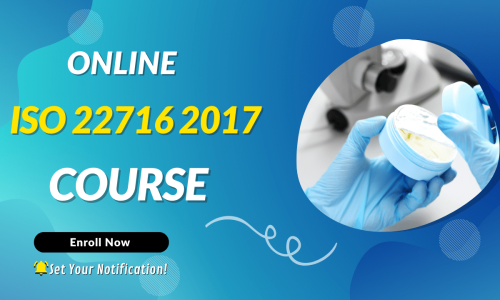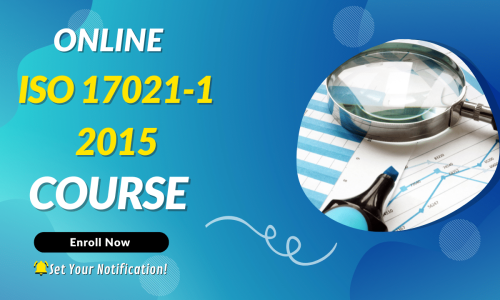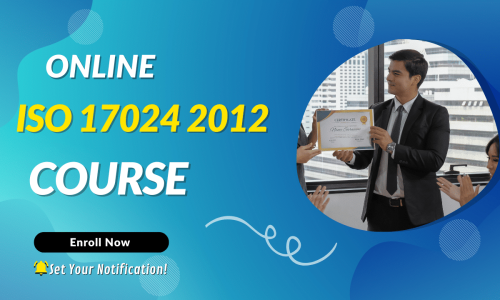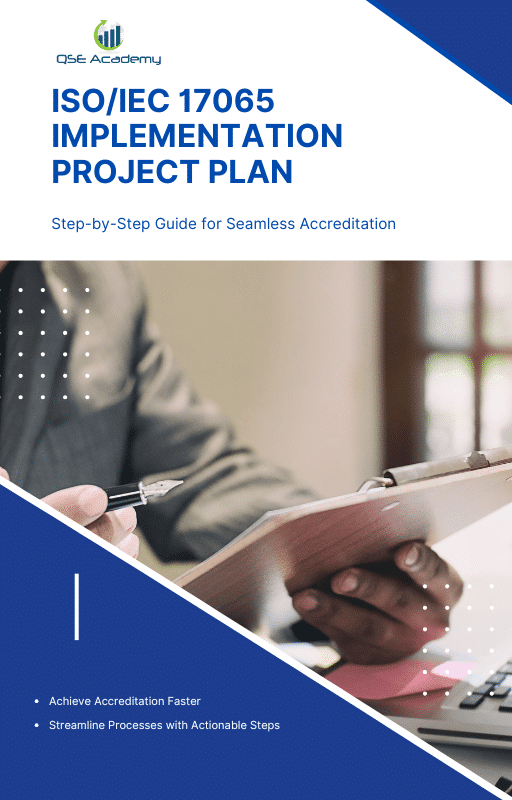Crafting a Comprehensive Quality Manual for ISO/IEC 17065 Compliance
Quality Manual for ISO/IEC 17065 Compliance
Imagine you’re setting up a system to prove that your certification body is trustworthy, consistent, and meets internationally recognized standards. You need a solid plan, clear processes, and well-documented procedures. That’s exactly where an ISO 17065 quality manual comes in—it’s the backbone of your compliance efforts, ensuring you meet the ISO 17065 quality manual guidelines while keeping everything organized and transparent.
But here’s the thing: writing a quality manual can feel overwhelming. What should you include? How detailed does it need to be? And how do you make sure it actually helps your organization rather than just being a stack of paperwork collecting dust? The good news is that when done right, your quality manual isn’t just a compliance requirement—it’s a powerful tool that helps streamline operations, build trust with stakeholders, and make audits a whole lot easier.
In this guide, we’ll break down everything you need to know about crafting a quality manual that aligns with ISO 17065 quality manual guidelines—without the headache. From the essential sections you need to include to practical tips for keeping it clear and useful, we’ll walk through the process step by step. By the end, you’ll see that writing your ISO 17065 quality manual isn’t just about checking a box—it’s about creating a document that strengthens your organization from the inside out.
So, let’s dive in and make this process simple, effective, and even a little bit enjoyable
Understanding ISO/IEC 17065 and Its Importance
So, before we dive into the nuts and bolts of writing your ISO 17065 quality manual, let’s take a step back and look at the bigger picture. What exactly is ISO/IEC 17065, and why does it matter so much?
What Is ISO/IEC 17065?
Think of ISO/IEC 17065 as the rulebook for organizations that certify products, processes, or services. It’s the international standard that ensures certification bodies operate fairly, consistently, and with integrity. If your organization provides certifications, this standard is your go-to guide for proving that you’re competent, impartial, and reliable—three things that are absolutely crucial for building trust in any certification process.
But here’s the catch: compliance isn’t just about ticking off a checklist. It requires clear documentation of how your certification body operates, from decision-making processes to how you handle complaints and appeals. And that’s where your ISO 17065 quality manual comes in.
Why Is a Quality Manual Essential for Compliance?
You might be wondering, “Do I really need a quality manual?” The short answer? Absolutely.
Your ISO 17065 quality manual is more than just a formal document—it’s a blueprint that explains how your organization meets the ISO 17065 quality manual guidelines in real-world practice. It serves as:
✔ A roadmap for your team – Everyone in your organization should understand how things work, from certification procedures to quality control measures. Your manual keeps things clear and consistent.
✔ A compliance safety net – Auditors will want to see proof that you’re following the standard. A well-structured manual makes it easy to demonstrate compliance.
✔ A credibility booster – Clients, stakeholders, and regulatory bodies all want assurance that your certification process is rock-solid. A strong ISO 17065 quality manual helps establish that trust.
✔ A troubleshooting tool – When issues pop up (and let’s be honest, they always do), having clear procedures in your manual makes it easier to handle problems effectively instead of scrambling for answers.
Now, here’s the challenge: Many organizations either overcomplicate their ISO 17065 quality manual or, worse, create one just for the sake of having it—only to never use it again. But when written strategically, your manual becomes a living document that actually improves the way your certification body operates.
In the next section, we’ll break down the key components that every ISO 17065 quality manual should include, making sure you cover all the important bases without unnecessary fluff. Ready? Let’s go!
Core Elements of an Effective ISO 17065 Quality Manual
Now that we’ve established why an ISO 17065 quality manual is so important, the next big question is: What should go in it?
The good news? There’s a clear structure to follow. The bad news? Many organizations overcomplicate their manuals, stuffing them with jargon, unnecessary details, or confusing layouts. But don’t worry—we’re here to keep things simple, practical, and actually useful.
Your ISO 17065 quality manual should be structured in a way that makes it easy to understand and apply. It should cover the key elements required by the ISO 17065 quality manual guidelines, ensuring your certification body operates smoothly, consistently, and transparently. Let’s break down the essential components:Essential Components to Include
At its core, your ISO 17065 quality manual should answer one fundamental question: How does your organization ensure its certification process is fair, reliable, and compliant? To do that, here are the key sections you’ll need:
1. Scope and Purpose
This is where you define what your quality manual covers. Outline the purpose of your ISO 17065 quality manual, explaining how it supports your organization in meeting the ISO 17065 quality manual guidelines. Make it clear who the manual is for and how it should be used.
2. Organizational Structure
Who does what? This section lays out roles, responsibilities, and reporting lines within your certification body. Think of it as a roadmap showing how decisions are made and who ensures compliance with the ISO 17065 quality manual guidelines.
3. Certification Process Framework
This is the heart of your manual. It should clearly outline your certification process from start to finish, including:
✅ How applications for certification are received and reviewed
✅ The evaluation criteria and decision-making process
✅ How certificates are issued, renewed, suspended, or withdrawn
✅ The steps for handling complaints and appeals
The goal? Make sure anyone reading the manual—whether an auditor, employee, or client—understands how your certification body operates.
4. Risk Management Approach
ISO 17065 emphasizes the importance of identifying and managing risks in the certification process. Your manual should explain how you assess potential risks, such as conflicts of interest, inconsistencies in decision-making, or issues with impartiality.
5. Document Control and Record-Keeping
A well-organized system for managing documents is critical. This section should outline:
- How documents are created, approved, and updated
- Where records are stored and for how long
- Who has access to which documents
Good document control ensures that your ISO 17065 quality manual is always up to date and reflects the latest regulatory requirements.
6. Complaint and Appeal Procedures
Let’s be real—at some point, disagreements or disputes will arise. Whether it’s a customer challenging a certification decision or an internal issue, your manual should outline:
- How complaints and appeals are received
- The steps for investigating and resolving issues
- Timelines for response and resolution
Having this section clearly defined not only ensures compliance but also builds trust with clients and stakeholders.
Structuring the Manual for Clarity and Compliance
Now that you know what to include, the next step is making sure your ISO 17065 quality manual is clear, easy to navigate, and actually useful. Here’s how:
✅ Use simple language – Avoid technical jargon that makes the manual difficult to understand. Stick to clear, straightforward explanations.
✅ Keep it organized – Use headings, bullet points, and numbered sections to make information easy to find. No one wants to dig through pages of dense text!
✅ Make it visually readable – Consider using tables, flowcharts, or checklists to simplify complex processes. This makes the manual more practical for everyday use.
✅ Balance detail with usability – While it’s important to be comprehensive, don’t overload the manual with unnecessary details. Focus on what’s essential for compliance and daily operations.
Why This Matters
A well-structured ISO 17065 quality manual isn’t just a compliance requirement—it’s a valuable resource for your organization. It ensures that everyone is on the same page, processes are consistently followed, and audits are smoother because all the necessary documentation is already in place.
In the next section, we’ll take a step-by-step approach to actually writing and formatting your ISO 17065 quality manual, making sure it meets compliance standards without becoming a bureaucratic nightmare. Let’s keep going!
Step-by-Step Guide to Developing Your Quality Manual
Now that we’ve covered what should go into your ISO 17065 quality manual, it’s time to talk about how to create it. Don’t worry—this doesn’t have to be a painful process! With a structured approach, you can develop a clear, compliant, and easy-to-use manual that aligns with the ISO 17065 quality manual guidelines without unnecessary complexity.
Think of it like writing a playbook for your certification body. It should be detailed enough to ensure compliance, but straightforward enough that your team can actually use it. Let’s break it down step by step.
Aligning with ISO 17065 Quality Manual Guidelines
Before you start writing, it’s essential to understand what ISO 17065 expects from your quality manual. The standard doesn’t dictate an exact format, but it does require you to demonstrate compliance in key areas such as impartiality, competence, decision-making, and process control.
Here’s how you can align with ISO 17065 quality manual guidelines effectively:
✅ Start with the standard itself – Go through ISO 17065 and highlight the key areas your manual needs to address. This ensures you’re covering all required elements.
✅ Customize the manual for your organization – While templates can be helpful, avoid copy-pasting generic content. Your quality manual should accurately reflect how your organization operates.
✅ Use simple, clear language – Remember, this isn’t just for auditors—it’s for your team too. Avoid overly technical descriptions that make it difficult for employees to follow.
✅ Ensure traceability to procedures – Your manual should outline what needs to be done and reference supporting documents like procedures, work instructions, and forms.
By following these ISO 17065 quality manual guidelines, you’ll create a document that is both compliant and practical.
Writing and Formatting Best Practices
A good ISO 17065 quality manual is well-structured, clear, and easy to navigate. Here are some best practices to ensure your manual isn’t just a stack of paperwork no one reads:
📌 Use a Logical Structure
A well-organized quality manual follows a logical flow. Typically, it should start with general company information, then move on to certification processes, risk management, and compliance controls. A simple structure could look like this:
1️⃣ Introduction & Scope – What the manual covers and its purpose
2️⃣ Company Structure & Responsibilities – Who does what?
3️⃣ Certification Process – Step-by-step overview
4️⃣ Risk Management & Impartiality – How risks are identified and managed
5️⃣ Document Control & Complaints Handling – Keeping records and resolving disputes
📌 Keep Sentences and Paragraphs Short
No one likes reading long, dense paragraphs filled with complex terms. Keep things short, clear, and to the point.
✅ Example of a complicated sentence:
“The organization shall, in accordance with ISO 17065 requirements, establish and maintain an impartiality policy that aligns with risk-based thinking to ensure objective decision-making processes.”
✅ Example of a simple, clear sentence:
“To meet ISO 17065 requirements, we have a policy to ensure all certification decisions are fair, unbiased, and based on facts.”
📌 Make It Visually Readable
Don’t be afraid to use:
📌 Bullet points for listing key requirements
📌 Tables to summarize information
📌 Flowcharts to explain processes
This makes your ISO 17065 quality manual much easier to follow.
📌 Be Consistent with Terminology
Define key terms at the beginning, so there’s no confusion. For example, are you calling it a quality manual, a compliance manual, or an operational manual? Keep it consistent throughout the document.
Document Control and Updates
Once you’ve written your ISO 17065 quality manual, the work doesn’t stop there! A manual that never gets updated quickly becomes outdated and non-compliant.
To avoid that, follow these simple steps:
✔ Assign responsibility – Designate a team member to oversee updates. This ensures ongoing compliance with ISO 17065 quality manual guidelines.
✔ Use version control – Always track changes to the manual. Use version numbers (e.g., Version 1.1, Version 2.0) and maintain a revision history.
✔ Schedule periodic reviews – Set a timeline for reviewing the manual (e.g., annually or after significant regulatory changes).
✔ Get feedback from users – Since the manual is meant for daily use, ask your team if anything is unclear or needs improvement.
By keeping your ISO 17065 quality manual up to date, you ensure it remains a valuable resource rather than an outdated document collecting dust.
Why This Matters
Creating an ISO 17065 quality manual might seem like a big task, but when you break it down step by step, it becomes much more manageable. The key is to follow the ISO 17065 quality manual guidelines, structure it logically, and keep it practical for daily use.
Next, we’ll look at common mistakes organizations make when writing their quality manual—and more importantly, how to avoid them. Let’s keep going!
Avoiding Common Pitfalls When Crafting Your ISO 17065 Quality Manual
Now that we’ve covered how to create a strong ISO 17065 quality manual, let’s talk about the mistakes many organizations make—and, more importantly, how to avoid them.
The goal of your ISO 17065 quality manual isn’t just to meet compliance requirements. It should also be a practical tool that actually helps your organization run smoothly. Unfortunately, many companies fall into the trap of making their manual too complex, too vague, or too disconnected from real operations.
Let’s go over the most common pitfalls and how you can steer clear of them while staying aligned with ISO 17065 quality manual guidelines.
Overcomplicating the Content
One of the biggest mistakes? Making the manual way too complicated.
Some organizations believe that more pages mean better compliance—but in reality, a long-winded, overly technical manual is just frustrating to use. Remember, your ISO 17065 quality manual is meant to guide your team, not confuse them.
✅ How to avoid this mistake:
- Use simple, clear language. If a new employee can’t understand your manual, it’s too complicated.
- Stick to what’s essential. Your manual should cover what’s required by ISO 17065 quality manual guidelines, but it doesn’t need to be an academic dissertation.
- Use bullet points, tables, and flowcharts. These make the manual easier to navigate.
🔹 Example of an overly complicated sentence:
“The certification body shall ensure that impartiality is maintained through the implementation of a robust risk management framework that identifies, assesses, and mitigates any potential conflicts of interest in accordance with ISO 17065 guidelines.”
🔹 Example of a clear, simple sentence:
“To stay impartial, we use a risk management process that helps us identify and reduce conflicts of interest, following ISO 17065 quality manual guidelines.”
See the difference? Keep it simple, direct, and readable.
Lack of Internal Involvement
Another big mistake? Creating the ISO 17065 quality manual in isolation.
If only one person (or a small team) writes the manual without input from others, you risk missing key operational details. This often leads to a manual that looks great on paper but doesn’t match what actually happens in practice.
✅ How to avoid this mistake:
- Involve key team members. The people using the manual—certification managers, auditors, and administrative staff—should have a say in its development.
- Get feedback before finalizing. Ask your team, “Does this manual accurately reflect how we work?”
- Keep it practical. The manual shouldn’t just be a compliance document—it should be something employees can actively use to guide their work.
By making your ISO 17065 quality manual a collaborative effort, you ensure it matches real operations and isn’t just a theoretical document.
Failure to Align with ISO 17065 Quality Manual Guidelines
This might sound obvious, but many organizations unintentionally miss key compliance points when creating their ISO 17065 quality manual.
Some manuals are too vague and don’t provide enough detail on critical processes like decision-making, impartiality, and complaint handling. Others copy and paste from generic templates without tailoring the content to their specific certification body.
✅ How to avoid this mistake:
- Check the ISO 17065 requirements carefully. Make sure you’ve covered all the necessary elements in your manual.
- Provide clear procedures. Instead of saying, “Complaints are handled according to procedure,” explain how complaints are received, reviewed, and resolved.
- Use real examples. If possible, include case studies or process examples to make your manual more practical.
Aligning your manual with ISO 17065 quality manual guidelines is crucial—not just for passing audits, but for building credibility and ensuring your certification body operates efficiently.
Treating the Quality Manual as a Static Document
A quality manual isn’t something you write once and forget. Yet, many organizations never update their manual, even when processes change or ISO 17065 requirements evolve.
✅ How to avoid this mistake:
- Schedule regular reviews. Set a reminder to review and update your manual at least once a year.
- Track changes properly. Use version control so you always know which version is the most current.
- Encourage continuous improvement. If employees notice outdated or unclear sections, update them immediately instead of waiting for an audit.
A strong ISO 17065 quality manual should be a living document that grows and adapts with your organization.
Why This Matters
Avoiding these common pitfalls will save your organization time, effort, and frustration. By keeping your ISO 17065 quality manual clear, practical, and up to date, you ensure it remains a useful resource instead of just another compliance document sitting on a shelf.
Next, we’ll dive into how to ensure ongoing compliance and continuous improvement, making sure your manual stays relevant and effective over time. Let’s keep going!
Ensuring Ongoing Compliance and Improvement
Great! By now, you have a clear, well-structured ISO 17065 quality manual that aligns with the ISO 17065 quality manual guidelines. But here’s the thing—your job isn’t done yet!
A quality manual isn’t just a one-time document you create and forget. To truly be effective, it needs to evolve with your organization. That means keeping it up to date, relevant, and continuously improving over time.
So, how do you ensure your ISO 17065 quality manual remains a living document rather than a dusty file no one looks at? Let’s explore the key steps to ongoing compliance and continuous improvement.
Internal Audits and Management Reviews
A great way to keep your ISO 17065 quality manual effective is through regular internal audits and management reviews.
Think of an internal audit like a routine check-up for your certification body. It helps you:
✔ Identify gaps or inconsistencies in your processes
✔ Ensure you’re still following ISO 17065 quality manual guidelines
✔ Fix small issues before they become major compliance risks
Here’s how to keep your internal audits effective:
- Schedule regular audits – At least once a year, but more frequently if processes are changing.
- Involve different team members – Fresh eyes can catch things others might overlook.
- Use the quality manual as a reference – Make sure the audit checks whether daily operations match what’s in your ISO 17065 quality manual.
After an internal audit, it’s time for a management review. This is where leadership evaluates the audit findings and makes decisions on improvements. It’s an opportunity to ask:
✅ Are there areas where we can improve?
✅ Are there any new risks or challenges to address?
✅ Do we need to update our ISO 17065 quality manual to reflect changes?
By regularly reviewing and refining your manual, you stay ahead of compliance issues rather than scrambling during an external audit.
Training Staff on the Quality Manual
Even the best-written ISO 17065 quality manual is useless if no one knows what’s in it. Training your team is just as important as creating the manual itself.
Here’s why training matters:
🔹 It ensures everyone understands their role in maintaining compliance.
🔹 It helps new employees get up to speed quickly.
🔹 It reduces errors and inconsistencies in the certification process.
How to Train Your Team Effectively
📌 Make training part of onboarding – New employees should get a walkthrough of the ISO 17065 quality manual as part of their introduction to the company.
📌 Use real-world scenarios – Instead of just reading the manual, show how it applies to actual daily tasks.
📌 Keep training interactive – Use Q&A sessions, workshops, or short quizzes to reinforce understanding.
📌 Update training when the manual changes – Every time you revise your ISO 17065 quality manual, make sure employees know what’s new.
A well-trained team ensures that your ISO 17065 quality manual guidelines aren’t just words on a page—they’re actually followed and applied in everyday operations.
Keeping Up with Regulatory Changes
ISO standards aren’t static—they evolve to keep up with industry needs and best practices. That means your ISO 17065 quality manual needs to evolve, too.
So how do you stay updated?
✅ Subscribe to ISO updates – The International Organization for Standardization (ISO) regularly publishes updates and amendments to its standards. Staying informed helps you prepare for any future changes.
✅ Engage in industry networks – Join certification body associations, attend ISO-related events, and participate in discussions. The more connected you are, the easier it is to stay ahead of new developments.
✅ Monitor changes in regulations – In some industries, local or national regulations can impact ISO 17065 compliance. Regularly check for any legal updates that might require a revision of your quality manual.
✅ Conduct an annual compliance review – Set aside time each year to review your ISO 17065 quality manual and make sure it’s fully aligned with the latest guidelines.
By staying proactive, you avoid compliance surprises and ensure your certification body remains fully aligned with the latest ISO 17065 quality manual guidelines.
Why This Matters
A quality manual isn’t just about compliance—it’s about creating a certification process that is reliable, efficient, and continuously improving. By focusing on regular audits, staff training, and staying up to date with regulatory changes, you ensure that your ISO 17065 quality manual remains a valuable asset rather than just a formal requirement.
Up next, we’ll wrap things up with a final summary and key takeaways. Let’s bring it all together!
Conclusion: Building a Strong ISO 17065 Quality Manual
We’ve covered a lot of ground, and by now, you should have a clear roadmap for creating, maintaining, and improving your ISO 17065 quality manual. But before we wrap up, let’s take a moment to reflect on why this document is so much more than just a compliance requirement.
Your ISO 17065 quality manual is the foundation of your certification body’s operations. It’s the playbook that ensures consistency, reliability, and trust in your certification process. When done right, it doesn’t just help you pass audits—it helps you run a smoother, more efficient organization.
Key Takeaways for a Strong ISO 17065 Quality Manual
✅ Keep it simple and clear – Your manual should be easy to understand, both for auditors and your team. Avoid jargon and unnecessary complexity.
✅ Align with ISO 17065 quality manual guidelines – Make sure your manual covers all required elements, including impartiality, risk management, and certification processes.
✅ Make it a living document – Update it regularly, conduct internal audits, and ensure it evolves with industry changes. A static manual quickly becomes outdated.
✅ Train your team – A manual is only effective if the people using it understand and apply it. Regular training ensures compliance becomes second nature.
✅ Stay proactive with compliance – Keep up with ISO updates, industry best practices, and regulatory changes to ensure your manual remains fully aligned with the latest requirements.
Final Thought: Your Quality Manual is a Business Asset
Many organizations treat their ISO 17065 quality manual as just another box to check for compliance. But if you approach it strategically, it becomes a powerful tool that helps you:
🔹 Build credibility and trust in your certification process
🔹 Create consistency in how your organization operates
🔹 Make audits easier by having clear documentation ready
🔹 Streamline processes and improve overall efficiency
Instead of viewing your ISO 17065 quality manual as a chore, think of it as an investment—one that helps your organization run better, smarter, and more effectively.
By following these best practices and ISO 17065 quality manual guidelines, you’ll create a document that works for you—not just for compliance, but for real operational success.
So, are you ready to craft a quality manual that actually makes a difference?

I hold a Master’s degree in Quality Management, and I’ve built my career specializing in the ISO/IEC 17000 series standards, including ISO/IEC 17025, ISO 15189, ISO/IEC 17020, and ISO/IEC 17065.
My background includes hands-on experience in accreditation preparation, documentation development, and internal auditing for laboratories and certification bodies.
I’ve worked closely with teams in testing, calibration, inspection, and medical laboratories, helping them achieve and maintain compliance with international accreditation requirements.
I’ve also received professional training in internal audits for ISO/IEC 17025 and ISO 15189, with practical involvement in managing nonconformities, improving quality systems, and aligning operations with standard requirements.
At QSE Academy, I contribute technical content that turns complex accreditation standards into practical, step-by-step guidance for labs and assessors around the world.
I’m passionate about supporting quality-driven organizations and making the path to accreditation clear, structured, and achievable.

